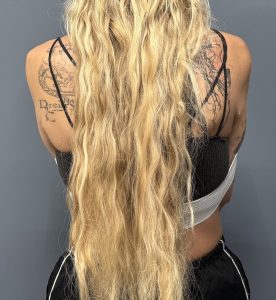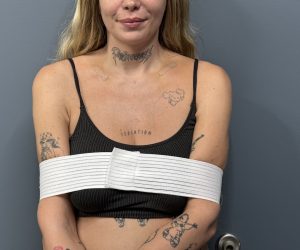Shoulder narrowing surgery is accomplished by shortening the length of each clavicle. Segments of the bone are removed and put back together using plates and screws with a shortened length. Like almost any such bone procedure, particularly in load-bearing areas like the shoulder, the reconstructed bone area needs to be protected for a period of time after the surgery to allow for good healing.
When it comes to the clavicle the most common postoperative garment would be that of a sling after fracture repair. While effective in fractures it is not in clavicle reduction osteotomies because it is bilateral and not just on one side. With a sling on each arm one would have no ability to have any arm function. This is more restriction than shoulder narrowing patients need. The main restriction is centered on limiting shoulder range of motion. Elbow and wrist range of motion is not restricted.
Currently there are no garments made for clavicle reduction patients given the newness of the procedure and low patient numbers. One ‘non-garment’ method of postoperative shoulder range of motion is to have the patient keep their elbows close to their sides in the first few weeks after the surgery. By keeping the elbows at their sides the forearm and hands can still be used, short arming their use like a T-Rex dinosaur. The whole concept is to key the stress off off the shoulder by limiting lateral abduction as well as anterior shoulder extension and posterior flexion.

Dr. Barry Eppley
World-Renowned Plastic Surgeon



